The meniscus (plural = 'menisci') is a crescent-shaped pad of fibrocartilage that sits on the end of the tibia (shin bone), a flat surface. Each meniscus (there are 2 in each knee) forms a concave surface for the round ends of the femur (thigh bone) to rest on. They cover approximately 2/3 of the tibia surface and are thicker on the outside and thinner on the inside appearing triangular in cross section.
The soft tissue structure in the knee includes 2 menisci, the medial meniscus (located on the inside of the knee) and lateral meniscus (located on the outside of the knee). Menisci are crescent-shaped pads of fibrocartilage that sit on the end of the tibia bone (tibial condyles) and form a concave surface for the rounded ends of the femur bone (femoral condyles) to rest on. They cover approximately 2/3 of the tibia surface and are thicker on the outside and thinner on the inside appearing triangular in cross section. The 2 menisci fill the space between the leg bones and cushion the femur so it doesn't slide off or rub against the tibia.
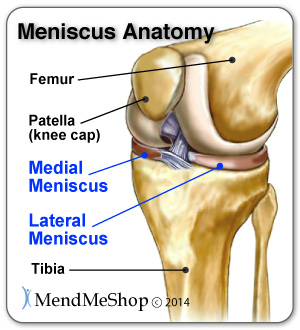
How do you know if your meniscus tear needs surgery or if you can heal it yourself, at home, with conservative treatments?
Most doctors, physicians and orthopedic specialists will recommend conservative therapy for minor meniscus injuries before considering surgery. If all conservative treatment methods have been explored and your symptoms (reduced range of motion, clicking, locking, pain) persist, then you will be considered a candidate for surgery. You and your doctor may decide to move forward and have you undergo surgery, which will trigger the next chapter of your recovery journey. Your post surgery rehabilitation efforts will have an important impact on how soon you can return to living and enjoying your normal daily life.
If possible, avoiding surgery is typically the best option. However in some some cases meniscal repair or even a meniscectomy is advised. Surgical removal of a meniscus (a procedure called a meniscectomy) may be necessary if the meniscus is worn down too much and/or is damaged beyond repair. Artificial meniscal implants might be used following a meniscectomy but the success rate of meniscal implants is currently found to be low (reference: boneandjoint.org.uk).
If you need to have meniscal surgery, we highly recommend you incorporate AidMyMeniscus's conservative treatment options during your post-surgery recovery. Using these conservative treatment methods when recovering from surgery are extremely beneficial for:
Important: Do not start TShellz Wrap® treatments until the surgical skin wound has healed over and inflammation has reduced in the area (minimum 6 weeks after surgery)
The type of surgery you will have depends on the type of meniscus injury you are faced with.
If you've taken the step to get a proper diagnosis, then you've seen your doctor and may have your MRI results in hand. When it comes to meniscus tears there's a lot of medical terms that might mean very little to you but will actually describe the type of tear you have by using:
Knowing all of these things about your tear will be the 1st step in also knowing whether you need surgery or if you'll be able to treat yourself with conservative treatment methods (avoiding surgery).
We here at AidMyMeniscus want to help you understand what all this medical speak is about...
Each meniscus is described as having 3 different sections when doctors, surgeons or physical therapists explain where a tear is located: the anterior horn (located at the front of the knee), the mid-body (middle of the knee), and the posterior horn (located at the back of the knee).
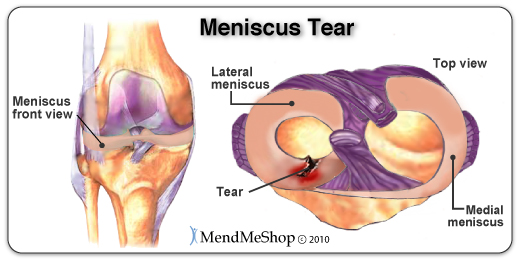
Here are some phrases used by doctors to describe the location of your tear:
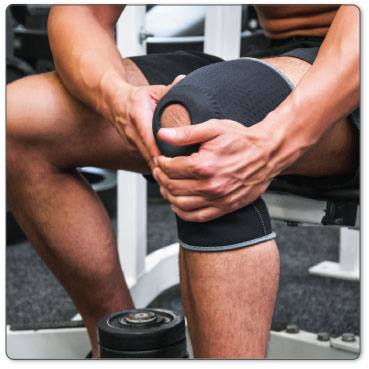
Blood supply to the injured meniscus is critical to healing! Location of the tear on the meniscus (the blood supply zone it's located in) will influence your ability to heal without surgery. The meniscus tissue is different 'fibrocartilage' than any other soft tissue in the body and has limited blood flow. This can make it difficult for the body to heal a meniscus tear on its own.
The blood flow to the menisci comes from the inferior genicular artery. This artery supplies blood to the perimeniscal plexus which provides oxygen and nutrients to the synovial and capsular tissues around the menisci and within the knee joint. The coronary ligaments attached to the meniscus, transport the blood from the perimeniscal plexus (network of blood vessels) into the peripheral of the menisci. The anterior and posterior horns of the menisci also receive a good amount of blood as they are covered by a vascular synovium. The interior part of the meniscus is avascular, having NO direct blood supply.
Tears in the red zone have the best chance of healing because they have more access to blood supply.
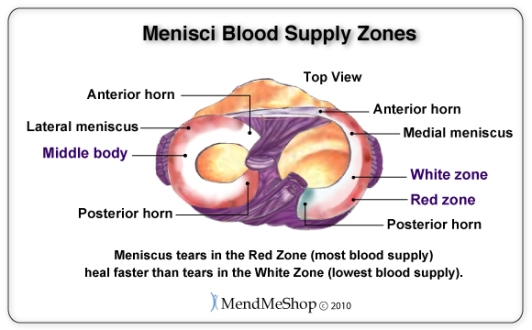
Based on blood supply, meniscus tears can be described in 3 different ways depending on the zone they're located in...
If both sides of a meniscus tear are in the red zone (the outer edge of your meniscus), your body has the ability to heal the tear with conservative treatments (most of the time, without surgery). When using conservative treatment options, a red-on-red meniscus tear will heal faster than tears of the same grade located deeper in the meniscus.
A meniscus tear that's between the red zone and the middle body (includes the outside rim and center portion of your meniscus) heals slowly. The outer edge of the tear generally receives good blood supply whereas blood supply to the inner part of the tear is not as good. Depending on the severity, shape/pattern and size of your tear, this may need surgery. Surgeons will often try to suture (repair) a meniscus when a tear occurs in this zone. This is because they will have determined that there's enough blood supply available to assist with healing after the surgery. When using conservative treatment options, a red-on-white meniscus tear will heal faster than white-on-white tears of the same grade.
A meniscus tear that's in the white zone (the inner most part of your meniscus). Tears in this location have a poor healing rate and in most cases they won't heal naturally because there is little to no blood supply. A bucket handle or parrot beak tear (where there is displaced tissue causing locking/catching/clicking in the knee) in the white-on-white zone is usually removed surgically (either through a partial meniscectomy or full meniscectomy) as healing is very unlikely.
Although meniscus tears vary heavily in size and severity, the severity is generally classified as follows:
This means the tear has a partial thickness in depth and the meniscus still remains attached. These tears tend to be smaller and more stable because the meniscus stays connected to the front and back of your knee and doesn't move about freely. Depending on the location, partial meniscus tears can heal well with conservative treatment methods.
This is a full thickness tear meaning that the tear has has penetrated completely from the top to the bottom of the meniscus. These tears tend to be larger and less stable because in many cases, a flap of meniscus tissue will be only partially attached to the rest of the meniscus. The flap may move around in your joint which can lead to further complications and damage if not treated (usually by removal in surgery).
These tears have frayed edges on the inner rim, where the meniscus is thinnest, which can eventually tear in multiple directions and can lead to a completely degenerated (frayed, worn, aged) meniscus. A flap of the meniscus often moves about in your joint. If some of your meniscus is catching in the middle of your knee (locking/clicking your knee), you'll need surgery to smooth out your meniscus and remove all damaged tissue.
If you are suffering from a full meniscus tear, then one of the menisci in your knee will be split in half. In such cases, the torn meniscus will move around in your joint resulting a a knee joint that typically feels quite unstable. You may also notice one or more bumps in the knee joint where the meniscus might be sticking out of the joint.
Both lateral and medial menisci are held in place with 'root' attachments at the posterior end of the meniscus. As the name suggests, it roots the tissue in place inside the knee, provides stability, and prevents the menisci from being squeezed out place by the bones of your knee. A meniscal root tear is a very serious condition that needs to be treated with surgery to re-attach the tissue. This is because the foundation of the meniscus is now weak, unstable (meniscal subluxation) and the joint will act as if it's not present at all.
This type of tear can be caused by a sudden trauma to the knee, which is common to athletes in their 20's. A meniscal root tear almost always comes with secondary injuries to supporting soft tissue; like the ACL, PCL or other damaged ligaments. Failure to have the meniscal root tear treated leads long-term degenerative joint issues, like osteoarthritis.
Degenerative meniscal root tears are common to adults in their 50's. This can happen with a pop in the back of the knee through deep flexes, squatting and/or lifting. This seeming trivial event leads them to discover they are suffering from a rapidly developing case of osteoarthritis.
The pattern of your meniscus tear will influence your doctor's method of treating your injury. Some patterns are capable of healing themselves through conservative treatments, while others will require surgery to treat severe symptoms (locking of your knee). The shape of your tear will also determine the most appropriate surgical procedure to fix your torn meniscus.

Diagram of meniscal tear patterns:
(A) Vertical or longitudinal (Bucket-handle).
(B) Oblique - tears are known as flap or parrot beak tears.
(C) Radial meniscus tear (or Transverse) - start on the inside white zone and goes to the middle body. A radial meniscus tear can continue to tear and reach the outside red zone. If this happens your surgeon will have no choice but completely remove your meniscus (meniscectomy).
(D) Horizontal cleavage tears - start on the inside white zone and goes to the middle body the meniscus may show signs of degeneration.
(E) Complex degenerative meniscus tears.
Only about 10 - 15% of meniscus tears are repairable, and in most of those cases the meniscus is repaired along with other tissue in the knee (such as the anterior cruciate ligament or ACL). (source: http://www.ckynde.dk/resources/ArtroskopiGenerel.pdf [Campbell's operative orthopaedics, Arthroscopy of the lower extremity] accessed 2019)
The shape of your meniscus tear is important because it will help determine the type of treatment you receive; some tears will heal without surgery, some can be treated surgically and some can't be fixed. Tears come in many shapes and sizes, however there are 3 basic shapes for all meniscal tears: longitudinal, horizontal, and radial. If these tears are not treated, they may become more damaged and develop a displaced tear often referred to as a bucket handle tear (longitudinal), flap tear (horizontal) or parrot beak tear (radial). Complex tears are a combination of two or more of these basic shapes with damage occurring in more than one direction and depth.
A longitudinal tear extends lengthwise, following the collagen fibers that run parallel to the contour of the meniscus. This tear divides some of the meniscus into an inner and outer section, however the tear never touches the outer rim of the meniscus. These types of tears are found in the middle or outer third of the meniscus - a good thing as the chances of healing are better the closer the tear lies to the outer rim. These tears typically occur in younger and more physically active individuals. Longitudinal tears tend to happen more to the medial meniscus than the lateral and typically results from repeated movements. It generally starts as a partial tear in the posterior horn, which can sometimes heal on its own.
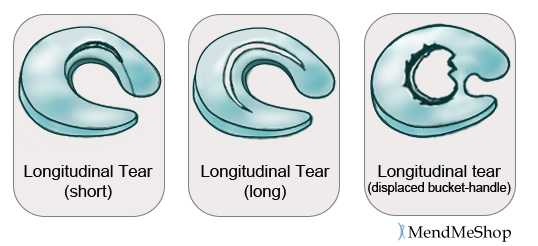
If a longitudinal tear doesn't heal properly it can lead to a displaced tear, known as a bucket handle tear. A bucket handle tear is a complete tear (top to bottom) that goes all the way through and never touches the inner rim of your meniscus. There is a risk that the handle may flip over and can catch on the femur, locking the joint and increasing pain. This tear accounts for 10% of all meniscus tears, and causes your knee to lock in flexion. It is seen most often in young athletes, and happens in conjunction with 50% of ACL injuries. Large bucket handle tears of the meniscus can cause your knee to lock as the tissue breaks free and is stuck down inside the knee joint, requiring surgery promptly to free the knee and prevent further tissue damage.
The most common location of an injury in your knee is the posterior horn of the meniscus, and longitudinal tears are the most common shape of tears. Small tears limited to the posterior horn of the meniscus won't lock your knee (like other, more severe, tears) but will cause pain, constant / on-going swelling and leave you feeling weak or unstable in the knee. Vertical tears of the meniscus start from either the top or bottom of the meniscus and can be separated into 2 distinct shapes: longitudinal tears and radial tears.
A horizontal tear starts as a horizontal split deep in your meniscus. This tear divides your meniscus into a top and bottom section (like a sliced bun). It is often not visible and moves from the posterior horn or mid section to the inside of your meniscus. Horizontal tears are rare and often start after a minor injury from rotation or degeneration. It occurs most often in your lateral meniscus but however it is noted in both menisci. Horizontal meniscus tears are degenerative in nature. They are more likely to occur in people as they age who may or may not already show signs of having osteoarthritis.
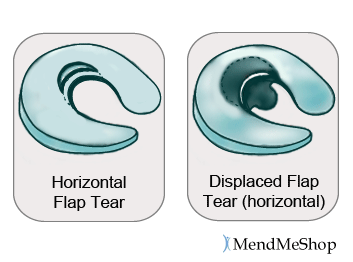
A complete horizontal tear resulting in displaced tissue is also referred to as a horizontal flap tear and can develop if your tear is overlooked or left alone. This type of tear is horizontal on the surface of your meniscus and creates a flap that flicks when your knee moves. It is a result of a strong force that tears your meniscus from the inner rim; it can easily become a complex tear if left untreated. Often, the flap is trimmed away during surgery to prevent further tearing. Since the periphery of the meniscus is not compromised and there is enough tissue left to heal, the cushioning function of the meniscus is maintained. If this tear extends from the apex of your meniscus to the outer rim, you may develop a meniscal cyst (a mass that develops from a collection of synovial fluid along the outside rim of the meniscus) and/or experience increased swelling in and around the knee.
A horizontal tear is a tear that is most commonly amenable to meniscus repair. Rather than removing the damaged portion of the meniscus, a horizontal tear may be able to be sewn together though healing will depend on adequate blood-flow in the area.
A radial tear starts as a sharp split along the inner edge of your meniscus and eventually runs part way or all the way through your meniscus, dividing it into a front and back section (across the middle body instead of down the length). This tear generally occurs between the posterior horn and middle section and is seen frequently in your lateral meniscus.
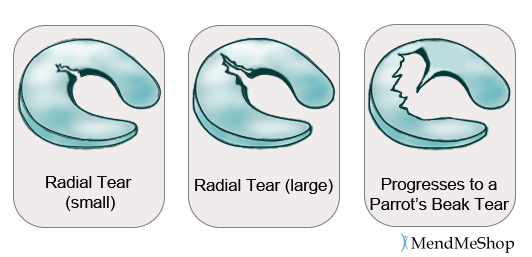
A small tear is difficult to notice, but when a radial meniscus tear grows and becomes a complete tear it will open up (meaning some of the meniscus gets displaced) and look like a part is missing. A displaced radial tear is called a Parrot's Beak tear as the tear generally resembles the curved shape of a parrots beak. Parrots beak tears have been found to typically occur in the thicker portion of your lateral meniscus. As it gets larger, it will catch or lock more frequently, and prevent your meniscus from protecting the articular cartilage during weight bearing. This tear is usually the result of a traumatic event or forceful and repetitive stress activities and it is often associated with other injuries such as ACL tears. Young athletes tend to suffer from combination tears called radial/parrot beak tears (the meniscus splits in 2 directions).
Similar to longitudinal tears, radial tears usually occur due to some kind of acute trauma and appear in younger and more physically active people. If you have undergone partial meniscectomy surgery, you are more likely to experience a radial tear. This may happen due to changes in knee movement and function because of the previous removal of meniscus tissue. Radial tears can be more damaging to your knee than longitudinal tears as radial tears affect the ability of your meniscus to transfer load and bear weight on your knee.
Oblique tears are basically radial tears that start at the inner side of the meniscus then travel diagonally outward - in some ways you could say that they are part radial tear and part longitudinal tear. Most oblique meniscus tears are happen in the posterior third of the medial meniscus.
Oblique tears commonly cause flaps and flaps are generally not good. Flaps cause mechanical instability - meaning they interrupt the smooth function of the knee joint and will make your knee joint feel unstable. Flaps causes by oblique tears typically mean that either some or all of the meniscus need to be removed - usually through arthroscopic surgery. Surgeons will try not to fully remove a meniscus if possible - especially in a younger person as the removal of a meniscus is widely regarded to quickly lead to osteoarthritis and often persistent knee pain.
The size of your meniscus tear will have some affect on your ability to heal the tear through conservative treatments. Meniscus tears under 1 cm can heal without surgery if it's located in the red-red or red-white zone (with some blood supply for healing). Tears that are 1.5 cm to 4 cm usually require surgery. The size of the tear becomes important because if the tear in the tissue is too large it will not heal without the help of your surgeon.
To understand why the size of your tear is important, let's imagine you have 2 slices of bread in front of you. You tear one just a little (less than an inch) and place it down. When you do this the bread will naturally pull the edges of the small tear back together. You tear the 2nd slice of bread in half (or more). When you place the bread down it will be floppy, and remain out of shape. You would need your hands, some peanut butter, or something else to force/keep both sides of the tear together. Your meniscus is no different, small tears have the ability to heal since the edges are still close enough to heal back together whereas large tears need sutures to bring the two sections of the tear back together.
Your age will directly influence the causation of your meniscus injury - the younger you are, the more likely a torn meniscus will occur during a sport, whereas torn menisci are more likely occur through degenerative issues as you age. It's been proven that the meniscus becomes weaker over time resulting in degenerative meniscal tears; 60% of individuals over the age of 65 will experience a degenerative meniscus tear. (reference: 1)
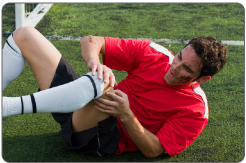
A degenerative tear would typically require a partial meniscectomy to remove damaged and displaced tissue. A meniscal repair isn't possible to fix degenerative damage because of the jagged and torn nature of the meniscus. A meniscal repair of degenerative tissue would be very difficult to perform and reduces the rate of success for healing. Because of this fact, your age increases the likelihood that your surgeon will feel that your tear can't be repaired.
As you now know - the location, blood supply zone, type of tear, pattern/shape, size, and your overall age/activity level will influence your course of treatment and your doctor's decision about surgery. As a general rule, doctors will always recommend conservative treatment methods wherever possible first before considering surgery. You may have to move directly onto surgery because of the amount of damage around your meniscus - but you can still benefit from use of these same conservative therapies in preparation for the surgery and afterwards during your rehabilitation.
The level of damage to your meniscus will also affect which surgery is best to deal with your injury. If a tear is repairable, the surgeon will do the best they can to fix your meniscus. In many cases, however, meniscal tears are not repairable and so a piece of the torn tissue will be removed to fix the injury.
Whether you need surgery or not to heal your meniscus tear, conservative treatment methods will get you on the path to recovery for quick and complete meniscus tear healing.
Meniscus tears are known to receive very little natural blood supply. This is especially true if your tear is located in the Red-White or White zone of the meniscus (closer to the center of your knee). It's the lack of blood flow around your tear that makes meniscus injuries so hard to heal. Healing is tough no matter what course of treatment your doctor suggests - ice, heat, physical therapy or surgery. It's no secret that no matter how your doctor suggests you treat your medial meniscus tear, you really need to get as much blood flow to your meniscus as you can to allow your body to heal the damage as best it can.
The most amazing thing about most small torn menisci is they are capable of healing itself - but they need your help!
The body uses your blood supply to heal its menisci - this means that its ability to heal is dependent on the strength of blood flow. Even if you don't receive enough natural blood flow to the location of your meniscus injury, you can still treat yourself in a way that gives your natural blood flow the boost it needs to reach further into your meniscus tissue.
After you find out how bad your meniscus tear is, what's next? Your doctor will be deciding if your tear requires surgery to clean it up or fix it. There are a lot of options available to you with healing with or without surgery during your recovery. Your healing will be influenced by the situation you're facing whether you're trying to heal without meniscus surgery, heal after a surgical repair or heal after a meniscus clipping or complete removal (partial or full meniscectomy).

Red-Red zone tears heal best with conservative treatments and few tears in that area require surgical repair. If the tear is less than 3 mm from the outer edge of the meniscus you will have success healing the tear on your own with conservative treatment methods. The lateral and medial meniscus tear types that respond well to conservative treatment include:
If you have been diagnosed with a small meniscus tear (like the ones mentioned above) then your doctor may recommend some the following conservative treatments to get you on the path of healing and recovery:
Red-White zone meniscal tears will most likely require surgery to suture the tissue or clip away a small part of the damaged tissue in order for it to heal. Tears that can be repaired surgically usually occur in an area of good blood supply in the meniscus. Acute injuries are typically the type of tears that can be repaired, and could be repaired with arthroscopic surgery within 3 to 6 weeks of the initial injury. Usually, some types of tears that can be surgically repaired include:
Surgery is just the beginning of a new journey because after surgery you'll need to stay focused on recovering completely and healing the damage in your knee. Your doctor, surgeon and/or physical therapist will guide you through recovery after surgery. Your recovery process will start by using conservative treatments at home. The first step is managing your pain and dealing with your swelling, inflammation, edema and fluid build-up. This can be done with effective cold compression through use of a Cold Compress or Ice Pack. This will be key in the first 4 to 5 days after your surgery. During this time you are adhering to the RICE formula to allow the area to calm down and relieve your pain.
After spending some time with initial recovery of rest and cold compression, the 2nd step of your rehab will be physical therapy and strengthening of the tissue around your knee. This is especially true if you're immobilizing your knee after surgery with a cast, brace or by using crutches. Long-term immobilization of your knee can lead to massive amounts of scar tissue that stiffens the entire area and causes your surrounding muscles (quadriceps, hamstring) to atrophy (waste away). Your dedication to recovery will eventually be tested with your adherence to continuing on with passive stretches and exercises at home.
Another key ingredient to your healing is blood flow supply. As you know by now, the meniscus is an area of the body with very limited blood supply. If your meniscus has been repaired and your tear was located in the red-white zone of your meniscus, then some of your tissue will not receive enough blood flow. Lack of blood flow will decrease your rate of healing, making it incredibly slow.
We believe the use of TShellz Wraps® for effective treatment of meniscus tears is one of the most under-utilized home treatment options available on the market today. We have thousands of customers that have tried many options out there and have been amazed at how substantial the impact of this device has been to their meniscus recovery. Circulatory Boost via use of the Knee TShellz Wrap® is ideal for treatment during your entire recovery process, after the swelling and inflammation have been reduced. Circulatory Boost allows you to increase your blood flow while resting comfortably. Regular treatment with a Knee TShellz Wrap® will help stimulate your body's ability to heal, improve overall functionality of your knee and decrease pain with every treatment.
Ask any doctor and they will tell you that the success of your surgery depends on your level of dedication to regular at home care of your meniscus repair. Most of our meniscus injury post-op clients have treated themselves successfully through regular use of home conservative treatments such as use of a Cold Compress or Ice Pack, a Knee TShellz Wrap® and passive stretches for the knee.
White-White zone meniscus tears won't heal on their own because this area of the meniscus has no blood supply which is why it's described as a 'white zone'. Surgery is necessary to prevent the tissue from completely degrading, tearing loose and locking the knee causing permanent damage to the tendons, ligaments and muscle atrophy in the leg. Your surgeon will remove all or clip away the flap of loose meniscus tissue. This type of surgery is needed when you suffer from:
Partial or complete meniscus removal surgery (meniscectomy) may leave you pain free... So for you, a new chapter begins with being pro-active to reduce the risk of further degeneration to your articular cartilage, bone(s) and what meniscus you have remaining. Further degeneration from here would typically mean more surgery. Pro-active means undertaking conservative treatment options on a continual basis. An example of a conservative treatment methodology is as follows:
The goal of a conservative treatment protocol for a patient that has already undergone meniscus surgery is to reduce the speed of degeneration of the knee joint, and hopefully prevent the onset of osteoarthritis.
Click HERE to Go To Our Online Store We take all major credit cards and Paypal.
If you have questions, call our office at 1-866-237-9608 (toll free continental US).
We are currently offering FREE SHIPPING and a 60 day trial period on all our Wraps.
Product Advisors are available 9:00 am to 5:00 pm Eastern Standard Time Monday to Friday.
I want to learn more about Post-Surgery Recovery
I want to learn all about Types, Patterns, Shapes & Severity of Meniscus Tears
I want to learn more about TShellz Wrap® Circulatory Boost
I want to learn more about Ice & Heat: Which Is Better For Treatment?
I want to learn more about Meniscus Treatments
I want to learn more about different types of Meniscus Surgery
During your recovery, you will probably have to modify and/or eliminate any activities that cause pain or discomfort at the location of your soft tissue injury until the pain and inflammation settle. The more diligent you are with your treatment and rehabilitation, the faster you will see successful results!
Please be aware that this information is neither intended nor implied to be a substitute for professional medical advice. CALL YOUR HEALTHCARE PROVIDER IMMEDIATELY IF YOU THINK YOU MAY HAVE A MEDICAL EMERGENCY. Always seek the advice of your physician or other qualified health provider before using any of our outstanding products to make sure they are right for you and your condition or if you have any questions regarding a medical condition. Always see your doctor for a proper diagnosis as there are often many injuries and conditions (some very serious) that could be the cause of your pain.
© 2025 In.Genu Design Group, Inc. Contact Us